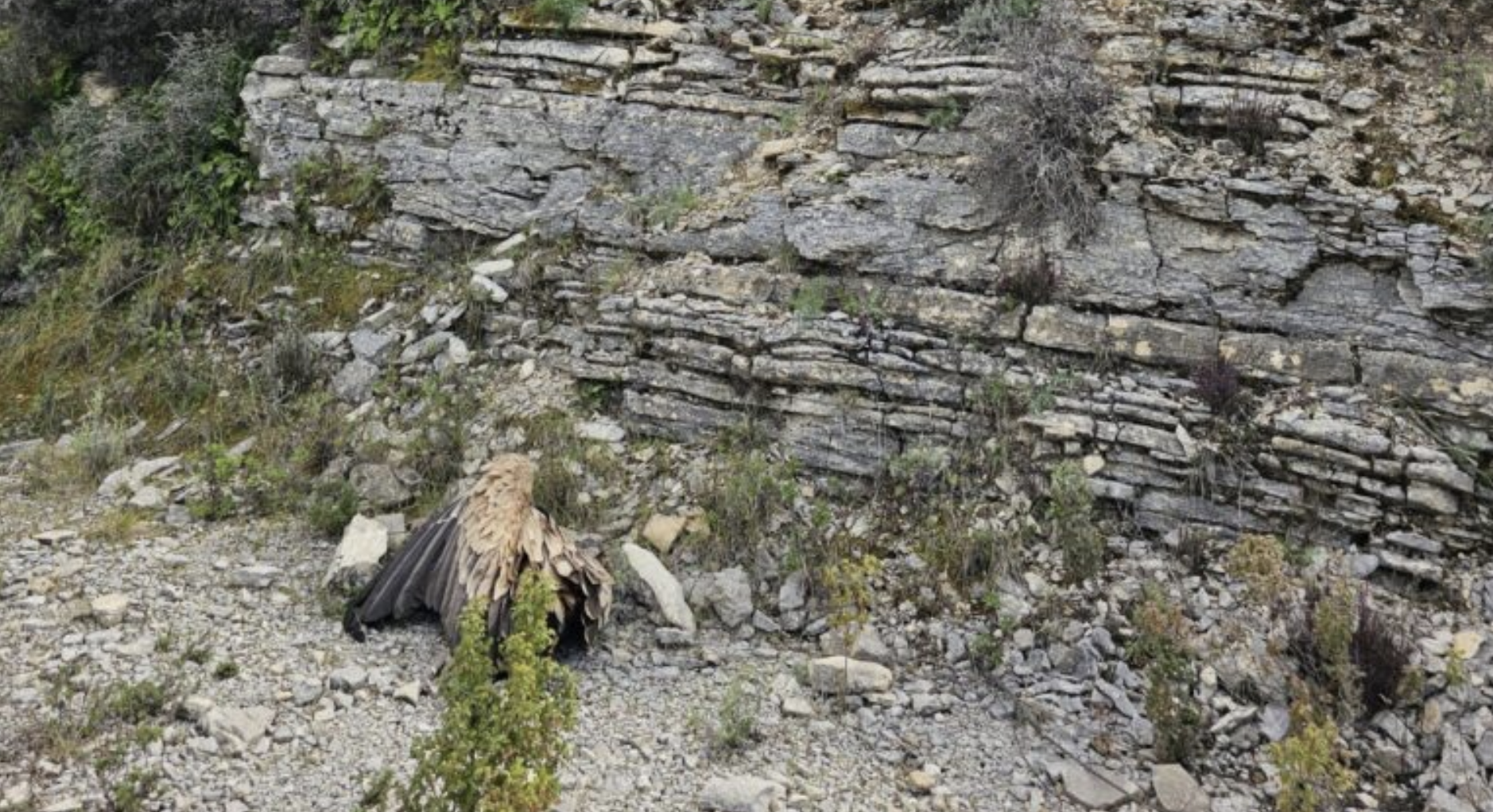
It seemed impossible for Ciuffo to survive a near-fatal incident of electrocution in Sardinia. Despite the initially grim prognosis, the Griffon Vulture endured and fully recovered, allowing him to return home to Bosa. Ciuffo stands as the first Griffon Vulture in Sardinia to survive and fully recover after an electrocution.
This accomplishment was far from straightforward and made possible thanks to the prompt actions of rescuers and conservationists involved in the LIFE Safe for Vultures project and the dedicated care provided by veterinarians and rehabilitators.
Ciuffo survives and recovers against all odds
Ciuffo’s story unfolds as one of luck, perseverance and dedication. While capturing shots for a travelling exhibition inaugurated on 25 January in Cagliari, wildlife photographer Uccio Saccu came across a Griffon Vulture in critical condition. He promptly informed the Forestry and Environmental Surveillance Corps, who rescued the bird from the countryside of Pozzomaggiore in April 2023, following the approved Protocol for the recovery of wild fauna in Sardinia. Ciuffo was then hospitalized, and upon entering the Bonassai Wildlife Recovery Center in Sassari, it became clear that the vulture was a victim of electrocution, with a seemingly irrecoverable condition. However, under the meticulous care of the Forestas veterinary team at the centre, Ciuffo made a remarkable recovery over the course of 10 months.
“He arrived at our clinic in desperate conditions, with particularly significant injuries to the radius and ulna, undoubtedly attributable to electrocution. He had lost all his feathers, but the therapeutic protocol adopted, involving daily changes of bandages, not only enabled him to fully absorb the extensive oedema caused by accident but also led to a complete moult. After ten days, we began to think we could save him, but we were concerned that we might not witness his return to the wild.”
Marco Muzzeddu, the veterinarian from Forestas, who coordinated the team that has been taking care of Ciuffo





After a long wait, Ciuffo returns back home
It required considerable time and effort, but it was all worth it. After ten months of hospitalization, Ciuffo was able to join the other vultures in the Bosa colony—an extraordinary outcome. Finally, on 22 February 2024, the LIFE Safe for Vultures team headed to the promontories overlooking the coast of Bosa, an ideal habitat for this species, to release the vulture back into the wild. Before that, the project’s scientific director, Fiammetta Berlinguer, equipped the vulture with a satellite transmitter to monitor its movements and track its habits. Upon release, the vulture looked around briefly to decide its course before taking off, accompanied by applause and cheers from the children of the local first-grade school in Bosa.
Following his behaviour with a satellite transmitter will allow us to study his behaviour, providing valuable insights to better guide future conservation activities.
Fiammetta Berlinguer – Professor at Sassari University
The story of the species and Cuiffo in Sardinia
In fact, we already have insights into Ciuffo’s life. His nickname comes from a resident of Bosa, part of the extensive community of enthusiasts and volunteers supporting the reinforcement of the Griffon Vulture population in Sardinia, which has seen extraordinary success in recent years. Ciuffo, the vulture in question, hatched on the island and is approximately three years old. It spent most of its time in Bosano, where the only native colony of Griffon Vultures in Italy remained, but was threatened a few years back. The LIFE Under Griffon Wings and LIFE Safe for Vultures projects came into the picture to prevent the extinction of nature’s cleanup crew on the island.
Not only was the species saved, but it is experiencing a robust resurgence thanks to these conservation projects focused on Griffon Vulture preservation in Sardinia. The predecessor, the LIFE Under Griffon Wings project, promoted a healthy population of the species in the Northwest of Sardinia. An outcome realized thanks to a myriad of measures, such as mitigating threats like poisoning, releasing vultures into the wild through restocking initiatives, and introducing a centralized network of “carnai” (or farm feeding stations) to address reduced food availability. Now, the mission is to return the Griffon Vulture across the entire island, with the ongoing LIFE Safe for Vultures project continuing and enhancing targeted conservation actions.
About the LIFE Safe for Vultures project

LIFE Safe for Vultures is a project co-financed by the EU’s LIFE Programme, acting as the first step to the restoration of the vulture guild in Sardinia. The University of Sassari leads the project in collaboration with Agenzia Regionale Forestas, Sardegna Corpo Forestale, E-Distribuzione and the Vulture Conservation Foundation. LIFE Safe for Vultures builds on the work of the successful LIFE Under Griffon Wings, with the ultimate objective for Griffon Vultures to regain their historic ranges and distribution areas from the central-eastern part of Sardinia to the south and at the same time promote the long-term survival of the species on the island. The project team is working to expand the network of farm feeding stations, create several anti-poison dog units to tackle wildlife poisoning, establish an additional feeding station in the south of the island, restock the population by importing 40 additional Griffon Vultures and reduce the threat of collision and electrocution with energy infrastructures.




